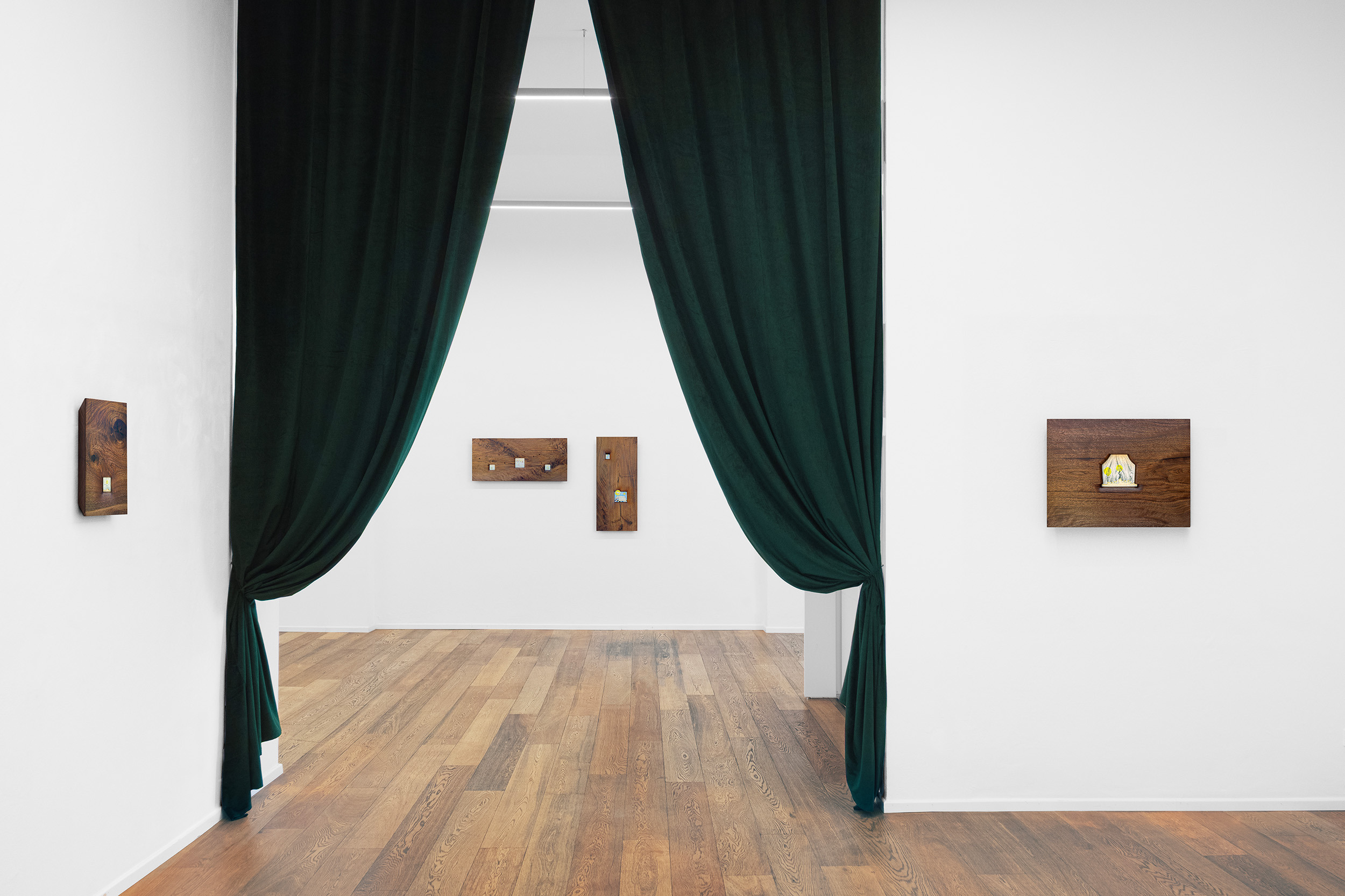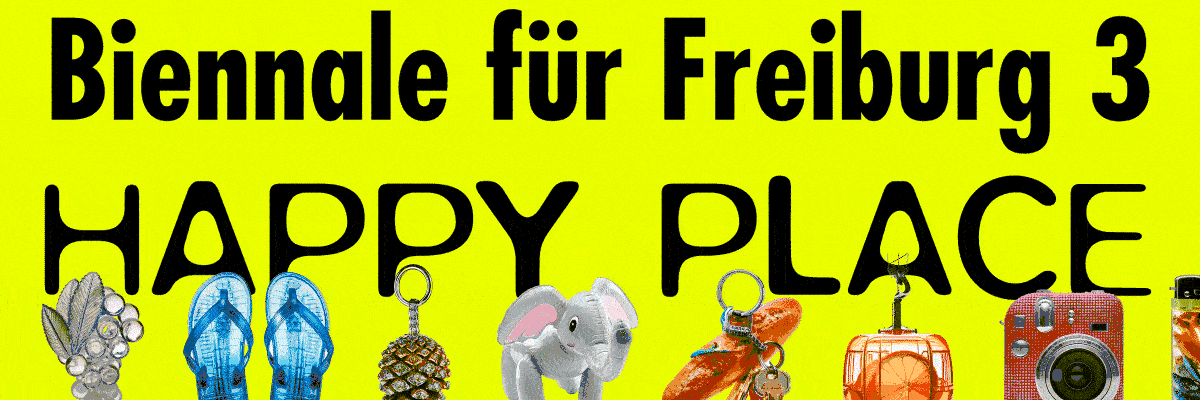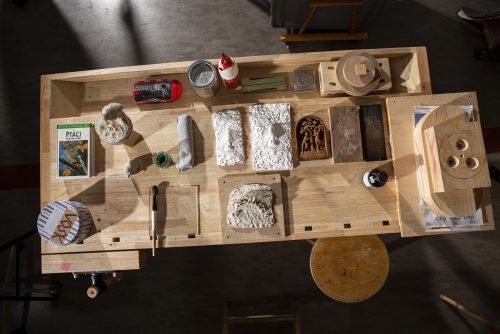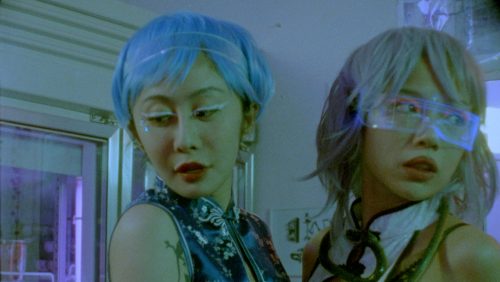
Wolfgang Günther and Em Kettner
TALES AND TILES. COMEDY OF THE ABSURD

Installation view, TALES AND TILES. COMEDY OF THE ABSURD
Advertisement

Installation view, TALES AND TILES. COMEDY OF THE ABSURD

Installation view, TALES AND TILES. COMEDY OF THE ABSURD

Installation view, TALES AND TILES. COMEDY OF THE ABSURD

Installation view, TALES AND TILES. COMEDY OF THE ABSURD

Installation view, TALES AND TILES. COMEDY OF THE ABSURD

Installation view, TALES AND TILES. COMEDY OF THE ABSURD

Installation view, TALES AND TILES. COMEDY OF THE ABSURD

Installation view, TALES AND TILES. COMEDY OF THE ABSURD

Installation view, TALES AND TILES. COMEDY OF THE ABSURD

Wolfgang Günther, Mental Maze, 2024, acrylic on cotton, 40 x 30 cm

Wolfgang Günther, Nocturnal Pull, 2025, acrylic, gouache on canvas, 180 x 120 cm

Wolfgang Günther, REM (Rapid Eye Movement), 2024, acrylic on canvas, 18 x 24 cm

Em Kettner, The Quilt Eaters, 2025, glazed porcelain tile embedded in oil-sealed walnut artist’s frame, 39 x 90 cm

The Swineherd (Circe’s House), 2025, glazed porcelain tile embedded in oil-sealed walnut artist’s frame, 40.5 x 85 cm
The exhibition ‘Tales and Tiles. Comedy of the Absurd’ brings into dialogue the works of German artist Wolfgang Günther and American artist Em Kettner.
The show is conceived as the staging of a theatrical performance, where each artwork tells a story or represents a symbolic character.
Drawing inspiration from the Theatre of the Absurd—a movement born in the 1940s during a time of uncertainty and existential crisis comparable to the current historical moment—the works simultaneously take on a humorous/satirical narrative approach and an investigative one into the human condition. Comic irony, at times caricatural, alternates with existential symbolism, portraying characters and situations emblematic of contemporary life.
In the works of Wolfgang Günther (b. 1989, Munich), we find a deep exploration of the human condition, with a particular focus on the theme of transformation—in nature, human identity, and social structures. His dreamlike compositions blend figurative and abstract elements, often populated by hybrid beings suspended in fragile, in-between states.
Fascinated by the metamorphosis of insects, Günther draws a philosophical and caricatural parallel between the cocoon and the human condition. He asks whether we, as human beings, are truly capable of shedding old layers—of evolving beyond who we thought we were—and becoming something unknown, yet more fully ourselves. Inspired by the cocoon stage of metamorphosis, Günther gently reflects: can we grow beyond what we once were? Can we become something new, more honest, more completely ourselves?
Balancing intuition and control, his paintings oscillate between playful and melancholic. His figures act as silent observers or uncertain protagonists, subtly reflecting the complexity of the human being with all its contradictions, desires, and quiet transformations.
Among the most recurring and theatrical characters in his work, we often find the upside-down figure, as in ‘Plunge’ and ‘Fade’, the mask-like personas (‘Mental Maze’, ‘REM – Rapid Eye Movement)’, or the harlequin of ‘Eclipse’.
Together, these characters contribute to creating a visually absurd narrative that oscillates between the romantic and the grotesque, guiding us symbolically toward timeless reflections.
While Wolfgang’s works are a choral song of recurring characters, Em Kettner’s (b. 1988, Philadelphia) works resemble a collection of short stories.
Each piece tells a brief tale illustrated on small porcelain tiles that, like comic panels, unfold within a larger wooden frame, which becomes a complementary and fundamental part of the work.
Each piece of wood is chosen to enhance the arrangement of the ceramics and the rhythm of the narrative. The artist uses walnut wood, sculpted three-dimensionally with a CNC machine, not only to create the openings that house the ceramics but also to carve patterns that echo the themes of each story: the curtain-like woodwork in ‘The Crowd-Pleasers’ recalls the architecture of a theater and the drapes behind which the timid performers hide; in ‘The Frogs’ Song’, the wood grain mirrors the swirling waves of the pond, while round engravings echo the fireflies depicted in the tiles; in ‘The Quilt Eaters’, the bed scene lies beneath a wooden sky marked by meteor traces, fluttering like those in the third ceramic tile.
The artist’s short stories are narrated through drawings on small square tiles—like a comic strip.
The dominant feature of these figures is their caricatural and humorous appearance, giving each story a sarcastic tone. Just as in the Theatre of the Absurd, Kettner hides behind the absurdity of her stories and the comedy of her characters a biting observation of the human spirit.
In ‘The Swineherd (Circe’s House)’, the artist revisits the myth of Circe and its many hidden meanings. In Homer’s Odyssey, the Greek hero Odysseus encounters the sorceress Circe during his journey back to Ithaca. Circe invites Odysseus and his men into her home and offers them a potion that transforms them into pigs.
It’s impossible not to smile at Kettner’s comic depiction of this myth, particularly in the illustration where half-human, half-swine beings are rendered through the architectural play of Circe’s house.
However, this ancient tale is rich in symbolism: Circe is not merely a seductress who ensnares men with her charm (as a superficial reading might suggest). Instead, she represents the power of transformation, both physical and emotional. Here, once again, we find the theme of metamorphosis, as in Günther’s works. Her ability to turn men into animals reflects the potential for deep and irreversible change. She symbolizes the possibility of overcoming challenges and adversity through a process of personal transformation and inner growth.
Perhaps less complex but equally symbolic, ‘In the Outhouse at the End of the World’ depicts a character caught off guard at the end of the world, sitting in an outdoor toilet under a meteor shower. The irony and sarcasm are unmistakable, as the artist portrays another darkly comic scene where disaster strikes when we are least prepared and most vulnerable.
As the curtain falls, each story and every character echoes within us.




